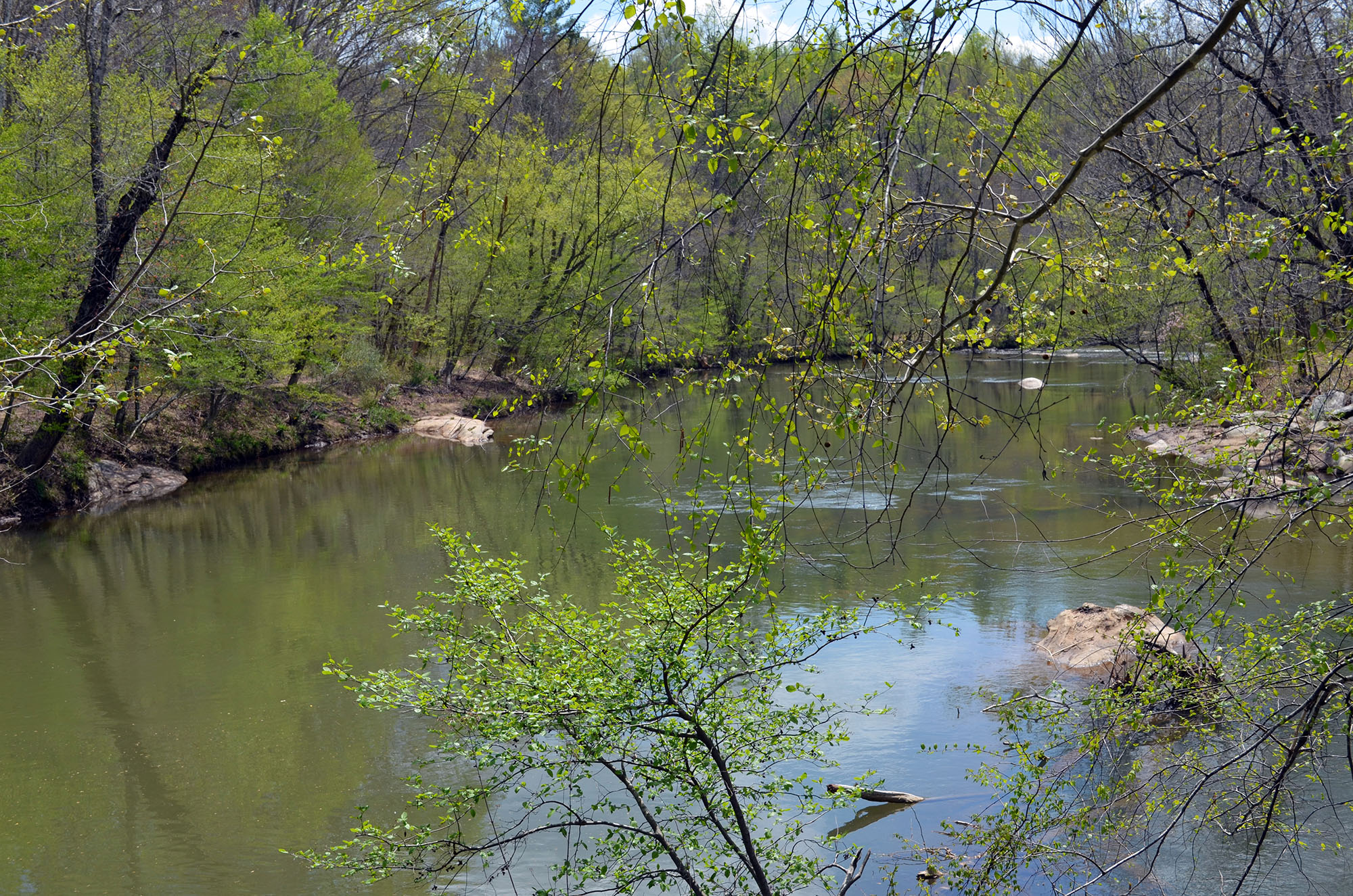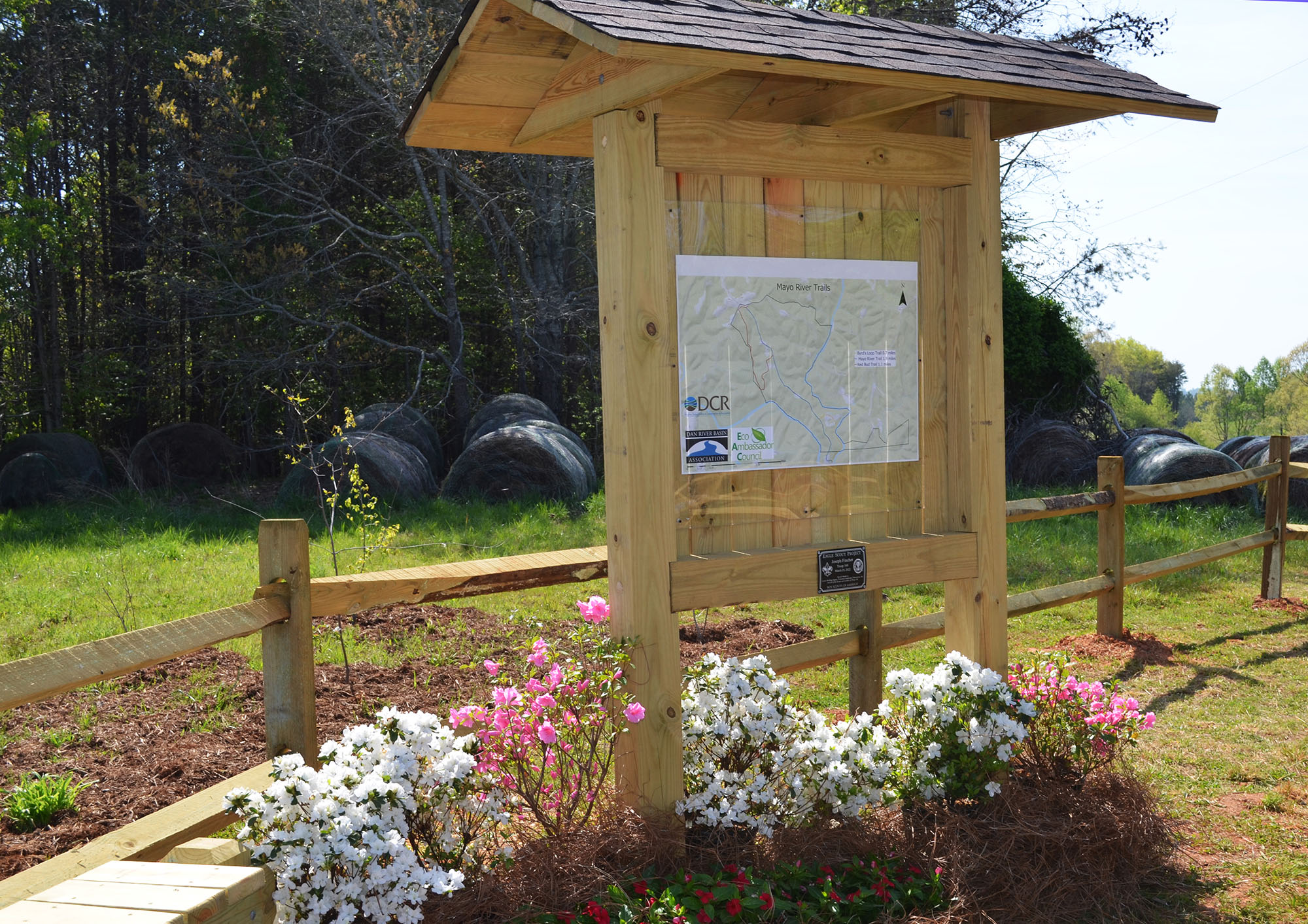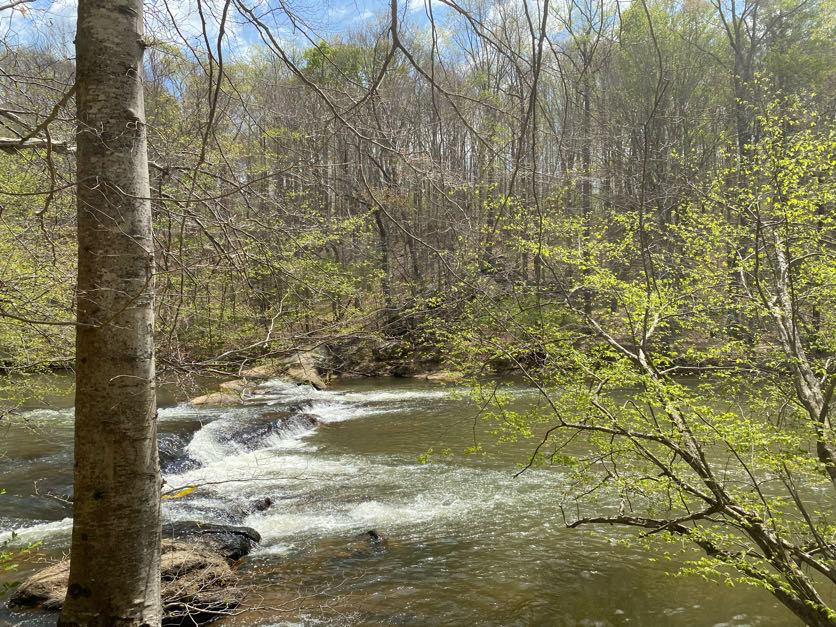
 Department of Conservation and Recreation
Department of Conservation and Recreation
Conserve. Protect. Enjoy.
 Department of Conservation and Recreation
Department of Conservation and Recreation
By Emi EndoPosted April 27, 2022
In the early summer of 2007, Lindley and T Butler took a visitor paddling down the South Mayo River when the rhododendron was in full bloom. Three deer happened to cross the river, T Butler recalled, and stopped to nibble foliage on an island. “It was as if the river was saying, ‘Look at me!’” she said.

It’s moments like these in the beautiful, remote area of southwestern Henry County that members of the Dan River Basin Association hope the public will be able to enjoy as the future Virginia Mayo River State Park continues to be developed. State and county officials, along with DRBA and business leaders, opened a trail system to the public on April 22.
The final parcel for this project was acquired last month by the Virginia Department of Conservation and Recreation. That 17-acre acquisition brought the total acreage under Virginia state ownership to 637 acres. Most of the land is between the North Mayo River and the South Mayo River, which converge in North Carolina, just south of the state line.
Virginia state officials first began acquiring property for the park in 2009.
In North Carolina, interim facilities for that state’s river corridor park opened to the public in 2010. North Carolina’s Mayo River State Park Superintendent Jessica Phillips said she was looking forward to seeing additional amenities being created on the Virginia side. “It’s always a good fit to have a park as your neighbor,” she said, adding that the parks on both sides of the state line shared the same values of conservation, preservation and recreation.
For Butler, the dream of a bi-state park system is coming true. She and her late husband, Lindley Butler, a North Carolina historian, helped to start the non-profit DRBA 20 years ago to preserve the rivers that flow through the border between Virginia and North Carolina.
“It’s absolutely thrilling to have this come to fruition,” she said.

Adam Layman, park manager of Fairy Stone State Park in nearby Stuart, Virginia, said he was excited that the final piece of the property had been acquired. “We’re eager to start moving forward with the planning phase for a park that can offer the community the opportunity to appreciate the cultural history and natural resources along the Mayo River.”
The region has plenty to offer for outdoor recreation enthusiasts as well as history buffs.
“Paddling and fishing is huge here,” said Brian Williams, DRBA’s Virginia project manager. “If you go to Virginia and paddle on the North Mayo River or South Mayo River and come to the confluence in North Carolina, a mile downstream, you’ve got a takeout. There’s a beautiful waterfall on the North Carolina side.”

Or for those who prefer to stay on land, “You can hike from Virginia to North Carolina – go from one state park to the next,” he said. “It’s going to be great for both states.”
Visitors could also imagine following in the footsteps of 18th-century surveyors who established the states’ boundaries. A rock feature on the North Fork at the state line is known as Byrd’s Ledge, in honor of William Byrd, who in October 1728 camped there and wrote in his journal about the natural beauty of the area.

“You can physically go and see and be part of history and stand on that spot,” Williams said.
Tyler Carter, a community reinvestment administrator at Carter Bank & Trust, said that when a region seeks to recruit businesses, a key question is, “What type of recreational access do you have in your community?”
Carter, chair of the Eco Ambassadors Council, a coalition of local business leaders that provided funding to open the first trails, said a strong selling point is “to be able to say we have this resource right in our backyard.” The need for outdoor recreational opportunities grew during the pandemic, just as the coalition was forming.
Tiffany Haworth, executive director of DRBA, added that the Virginia park would be a boon for tourism and local economic development. “Henry County has a lot of dedication to outdoor recreation, with river trails and trail access in their municipality,” she said.
Henry County Administrator Tim Hall said, “I can’t tell you the number of times I’ve been at a trail, or a kayak launch, or a sports field, and had someone say they were from out of town.” Visitors come for the outdoor amenities, he said, then stay and shop. “And that impacts our sales tax revenue, our lodging tax revenue and our meals tax revenue. Using nature as an economic driver is a wonderful way to accomplish things we would not be able to accomplish without those amenities.”
Categories
Conservation | Scenic Rivers | State Parks
Tags
rivers | state parks

